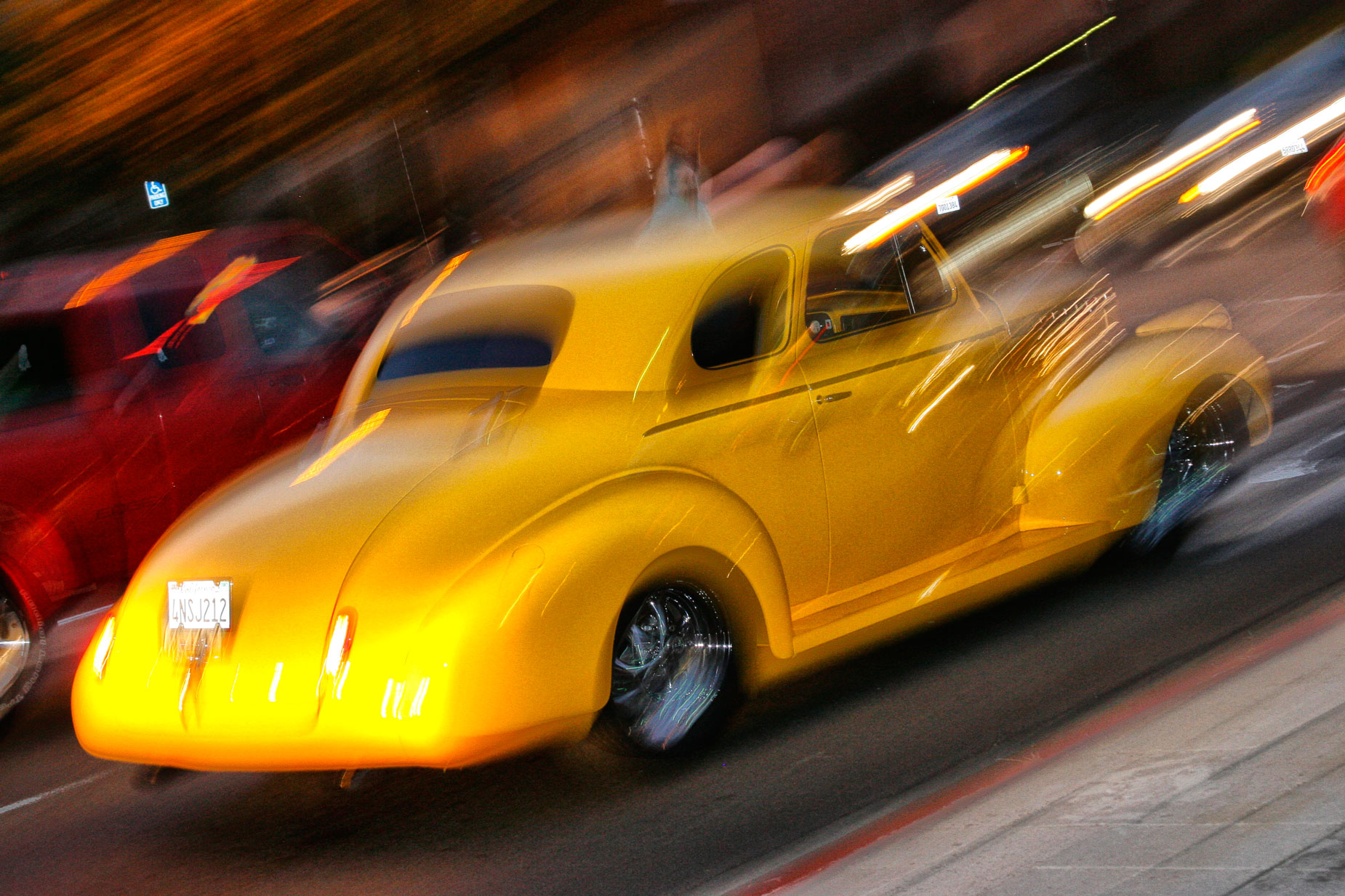Today’s Post by Joe Farace
“Never underestimate the therapeutic power of driving and listening to very loud music.” – Unknown
More and more DSLRs and mirrorless cameras are offering higher and higher ISO setting. The full-frame Pentax K-1 Mark II I tested has a high ISO setting of 819,200. You can see the results of my high ISO testing of this camera here. Along with the good news comes the bad: noise. I consider the noise that you see in digital photographs to be the visual equivalent of static in radio signals and digital cameras produce noise for lots of reasons.

How I made this shot: Some nighttime photography involves trial and error. For this shot of a hot rod made during Cruise Night in Escondido, California I used a Canon EOS 30D with EF 28-135mm f/3.5-5.6 IS USM lens at 53mm. I kicked the camera’s ISO setting up to 800, set the camera in Aperture Priority mode and lived with the resulting 0.3 sec exposure because I was more concerned about creating a mood than capturing these street rods in sharp focus. I also experimented with Exposure Compensation and increased this shot’s exposure by one-third stop but it was still ever-so-slightly underexposed.
Digital noise has many causes
Dark noise can be produced by heat from the camera’s sensor during capture. The dark current that’s produced gets collected along with light passing through the lens. The Panasonic Lumix GH6 has a built-in fan and while I’m sure it’s just for shooting video, it (theoretically) should help with low light photography too. The camera has five fan settings, including off, but the GH6’s fan did not kick on when my friend Barry Staver was shooting stills with the camera and he couldn’t find any reference to its use for still photography in Panasonic;s 800-page manual.
Random noise is created by fluctuations within the camera’s circuitry or by electromagnetic waves from outside the camera. Maybe large battery packs?
Signal noise is caused by fluctuations in the distribution of how light strikes a sensor. You’ll sometimes hear the term signal-to-noise-ratio ratio used in this respect, which is a measure of signal strength relative to background noise.
Amplified noise is caused by selecting higher ISO speeds and appears to be the digital equivalent of pushing film to achieve greater light sensitivity. Pushing film at ISO settings higher than its “box speed” usually adds more and larger grain to a photograph.
Then there’s accumulative noise, which is caused by using slow shutter speeds.The noise just accumulates while the shutter is open…
While most newer DSLRs and mirrorless cameras do a much better job of handling noise, especially at high ISO settings, than previous versions of the same camera brand, it’s not going away anytime soon. For more information on coping digital noise in your photographs, please read my post: Tips for Dealing with Digital Noise...
If you enjoyed today’s blog post and would like to buy Joe a cup of Earl Grey tea ($3.50), click here.
Along with photographer Barry Staver, Joe is co-author of Better Available Light Digital Photography with new copies are available from Amazon for $21.50 and used copies starting around six bucks.
